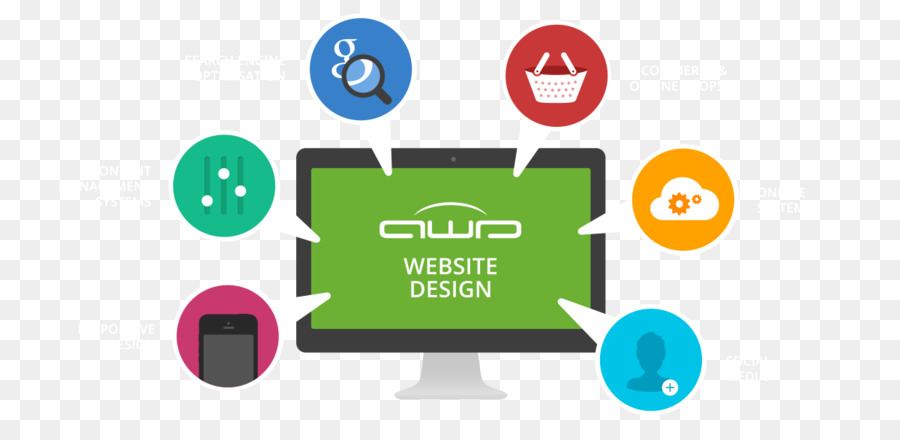Get Ready To Journey With Time And Find Exactly How Websites Have Actually Ended Up Being A Lot More Sophisticated, Straightforward, And Aesthetically Sensational
Get Ready To Journey With Time And Find Exactly How Websites Have Actually Ended Up Being A Lot More Sophisticated, Straightforward, And Aesthetically Sensational
Blog Article
Authored By-Kahn Bojesen
In the past, internet sites were simple and concentrated on details. Navigation was straight, and style was for desktop computers. Now, user experience is vital. Information guides layouts for very easy navigation. Responsive layouts match various gadgets. Today, dark mode minimizes stress, and minimal menus boost navigating. Interactive features engage users, and strong visuals attract attention. AI assimilation boosts involvement. See how design has actually developed to enhance your online trip.
Early Days of Web Design
In the early days of website design, simplicity preponderated. Medical SEO Secret Sauce FT Worth were standard, with limited shades, font styles, and designs. The emphasis was on providing info instead of flashy visuals. Customers accessed the net via slow dial-up links, so speed and functionality were essential.
Navigating food selections were straightforward, normally located at the top or side of the web page. Internet sites were created for desktop, as mobile browsing had not been yet common. Content was king, and developers prioritized simple readability over complicated style components.
SEO Alternative Medicine was the main coding language used, and designers had to work within its constraints. Animations and interactive functions were minimal compared to today's criteria. Websites were static, with little dynamic web content or individualized user experiences.
Surge of User-Focused Layout
With the development of internet site style, a shift towards user-focused layout principles has actually become significantly noticeable. Today, developing sites that focus on user experience is essential for involving visitors and accomplishing business objectives. User-focused layout involves recognizing the needs, choices, and actions of your target market to customize the internet site's design, material, and includes appropriately.
Designers now conduct extensive research study, such as customer studies and functionality testing, to gather understandings and comments directly from users. This data-driven method helps in developing intuitive navigating, clear calls-to-action, and visually attractive interfaces that reverberate with site visitors. By putting the customer at the facility of the design process, web sites can deliver a more customized and pleasurable experience.
Receptive layout has likewise become a crucial aspect of user-focused layout, ensuring that internet sites are maximized for numerous devices and display dimensions. This versatility enhances access and use, accommodating the varied means customers interact with internet sites today. Fundamentally, the increase of user-focused design indicates a shift in the direction of producing electronic experiences that focus on the demands and expectations of completion customer.
Modern Trends in Web Design
Check out the latest patterns forming website design today. One famous trend is dark mode layout, using a smooth and modern appearance while lowering eye strain in low-light environments. An additional vital fad is minimal navigating, simplifying food selections and enhancing individual experience by focusing on essential elements. Including micro-interactions, such as computer animated switches or scrolling effects, can develop an extra appealing and interactive web site. Receptive design continues to be critical, guaranteeing smooth customer experiences throughout different tools. Furthermore, making use of vibrant typography and unbalanced formats can add visual rate of interest and draw attention to particular web content.
Incorporating AI innovation, like chatbots for customer assistance or tailored referrals, enhances individual engagement and enhances processes. Accessibility has additionally end up being a considerable pattern, with designers prioritizing comprehensive layout techniques to accommodate diverse user needs. Accepting sustainability by maximizing internet site performance for speed and efficiency is another emerging trend in website design. Working together with customer comments and information analytics to repeat and enhance design continuously is necessary for remaining pertinent in the ever-evolving electronic landscape. By accepting these modern-day trends, you can create an aesthetically appealing, user-friendly website that resonates with your audience.
Final thought
As you reflect on the evolution of website layout from the early days to now, you can see just how user-focused design has actually ended up being the driving force behind modern patterns.
Welcome the journey of change and adaptation in website design, always maintaining the user experience at the forefront.
Remain existing with the most up to date patterns and modern technologies, and never stop progressing your approach to create aesthetically stunning and user-friendly sites.
Develop, adapt, and create - the future of website design remains in your hands.
